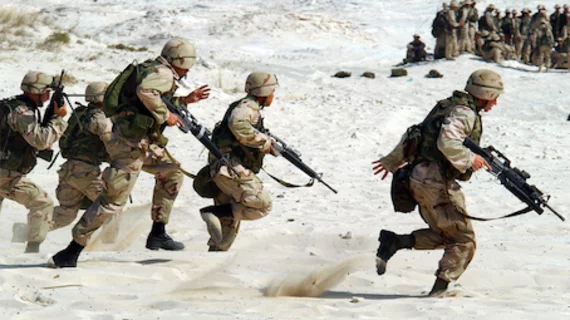Active-duty Army personnel in the U.S. have poorer cardiovascular health than the larger civilian population, researchers have found—especially when it comes to blood pressure.
Study author Loryana L. Vie, PhD, and co-authors’ findings directly contradicted their initial hypothesis that more soldiers than civilians would demonstrate “ideal” heart health, as measured by seven criteria from the American Heart Association. But, comparing a group of more than 263,000 active-duty soldiers to a matched group of civilians in 2012, the team said it didn’t look like the Army’s emphasis on physical fitness and medical screenings were translating to better health outcomes.
For the study, Vie and colleagues evaluated soldiers and civilians on four criteria, including current smoking status, weight, blood pressure and diabetes. The factors represent four of the AHA’s seven behaviors that correspond to ideal cardiovascular health; the remaining three—diet score, physical activity and total blood cholesterol— were immeasurable based on 2012 Army data.
Also in line with AHA practices, the researchers classified each factor as ideal, intermediate or poor. They found a greater fraction of Army personnel met ideal criteria for smoking tobacco and diabetes than civilians, but the difference for smoking was minimal, with around 20% of both groups identifying themselves as current smokers. When it came to hypertension, just 30% of soldiers had an ideal blood pressure compared to 55% of civilians.
“Ideal weight and blood pressure metrics were strikingly low in both active-duty personnel and civilians,” Vie said in a release. “We found that only one-third of the Army and civilian groups had an ideal weight.”
Further breaking down their study population into age-matched groups, the authors said civilians continued to have a higher percentage of ideal CV metrics compared with Army personnel. The overall rates, though, were low across both groups and even among the youngest subjects—16% of civilians aged 17-29 and 10% of soldiers in the same age bracket met ideal criteria in all four categories.
“It was surprising to find that Army personnel were less likely to have ideal cardiovascular health—especially due to higher blood pressure—compared to civilians of similar ages,” another study author, Darwin R. Labarthe, MD, MPH, PhD, said in the release, noting recruits are actually screened to exclude candidates with high blood pressure.
“We’ve identified a point of concern about Army health which calls for further evaluation. Further analyses should address nutrition and physical activity, as well as possible effects of deployment experience. Ultimately, we need to help our soldiers become heart-healthy.”
Vie, Labarthe and colleagues’ work was published online June 5 in the Journal of the American Heart Association.

